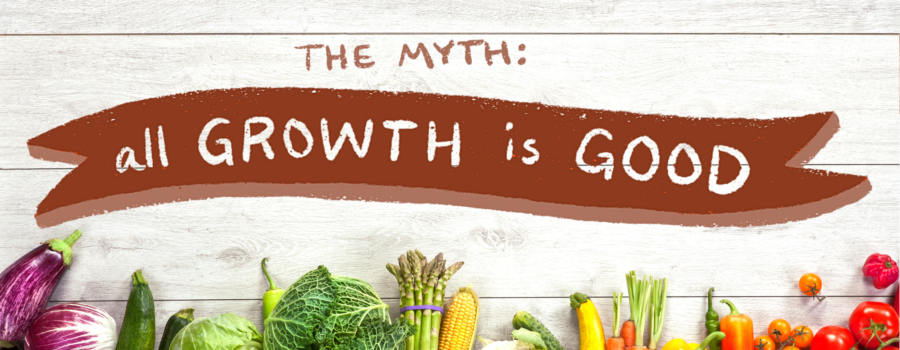In early 2020, many farms and markets found themselves adapting to COVID market conditions without the time to make a proper business plan. In preparing for 2021, it is time to take a look at your sales and operational plan to ensure profitability. In light of the shift to online sales to consumers, here are 3 areas that deserve careful review as we approach the 2021 season and how LFM helps ensure profitable growth:

“[Growth] comes with a whole new set of questions. How do you give this legs and make it last? How do you stabilize and hold on to this market share? Where do you want to expand? What new producers or new products do you want to bring on?”
-Andre Cantelmo, Three River Farmers Alliance, LFM customer
Harvest, Order Packing & Distribution
We find that most farms and markets (before using our platform) use data exports to Excel to manage these different functions. There is tremendous room for improvement and cost savings – the challenge is that every business has different infrastructure, distribution and staff, and so a flexible but comprehensive solution that does not involve lots of spreadsheets is critical.

Here’s how LFM approaches order fulfillment:
- Give your harvest crew harvest instructions. If your harvest crew is not field packing, then they probably need different instructions than your packing crew. If you sold 2.5 lb packs of arugula to restaurants and 8 oz bags that get packed in the pack shed, your field crew needs to harvest the right number of pounds of arugula. LFM will total up your harvest quantities for products sold in multiple units.
- Crop failures, miscalculations, etc. Despite the best of intentions, the nature of farming in mother nature dictates that there are times when farms can’t fulfill all of the orders they received. LFM makes it easy to update all of your orders in just a couple of clicks.
- Pack smart. Do you use volunteers to pack? Are you aggregating from a bunch of farms that show up at different times? Or do you have an assembly line like packing system? However you get orders packed, LFM can provide packing reports sorted in the right order so you can get orders packed as quickly as possible.
Delivery
Most farms and markets started delivering orders and made a guess at a delivery fee without analyzing the cost.
Here’s how LFM can help you keep delivery costs under control:
- Automation. Make sure your customers are in your delivery area. LFM’s storefront will validate their zip or postal code in the ordering process.
- Route optimization. Delivering to hundreds of addresses every day means that you need to be efficient. LFM’s two-way integration with Routific ensures your drivers are driving the most efficient route and provides tools for customer communication about delivery status. In addition, you can further accelerate your packing by route.
Transaction Fees
Individually, $0.30 plus 2.9% or 3.5% per transaction doesn’t seem like a bad deal, but it adds up quickly and unnecessarily eats into your profit. It’s even higher, if some of your orders, such as orders with meat, cheese or other variable weight items have multiple transactions. Please note LFM does not charge transaction fees but we have architected the system to help customers minimize their transaction fees – often offering 30-50% reduction in transaction fees.
How LFM helps minimize transaction fees:
- LFM integrates with the authorize.net payment gateway, providing you access to merchant rates that are typically reserved for larger online retailers. The account and merchant rates will depend on whether you are processing payments for individual orders (considered low risk and will offer low rates) or pre-payments for subscriptions that will be delivered 6+ months away (considered higher risk by the payment card industry and require higher rates).
- In addition, LFM can minimize the number of transactions. Instead of processing payment immediately when a customer places an order and a second time to account for any changes, payment info is collected securely and then processed in bulk after meat weights or other adjustments are complete.
- LFM also offers customers the ability to edit their orders until your order deadline. Instead of submitting another order for the lettuce and head of broccoli, they can just add it to their order. This not only reduces transaction fees, but it also increases your average order size and decreases your admin time.
That’s not it! We have some more advice too…
Don’t compete with big box stores.
It can be tempting to think you have to offer the same conveniences, like same or next day delivery, as big box stores and e-commerce giants for customer retention. While some level of convenience is important, most buyers are not buying from you for convenience – they are buying the products and story you offer.
According to Darren Stott, an order fulfillment and delivery expert, “You are competing in local, direct from the farmer, high quality product. Therefore, convenience is not something you can compete on. If you do, it will cost you a lot of time and resources.“ If you are ramping up your delivery service, consider incorporating professional tools to increase your efficiency – Route Optimization, driver instructions and customer communication can make the difference in delivering 8-10 orders a day to delivering 25+. LFM has lots of tools built in for drivers to offer optimal customer service. We also offer 2-way integration with Routific for Route Optimization and driver navigation.
Think outside the box.
Don’t limit growth opportunities by sticking to the confines of your usual routines. As more and more farmers markets turned to LFM for their online ordering platform, we saw many unique and profitable models for diversifying market sales. Seasonal events and markets offered a big boon to some markets this last year; several bringing in more than $100,000 on a single day. Rather than maintaining a weekly market, a monthly market consolidates efforts and resources for producers and customers.
Online ordering and in-person sales can continue to reinforce each other as our economy re-opens. Many farmers markets have long waiting lists of vendors that wish to participate. Use online orders as a way to bring on more vendors that don’t fit in your physical space. Some vendors may not be able to sell in person; keep them involved with the online market. Even producers that sell at the physical market have to make choices about items they bring to their market due to space considerations– an online pre-order market can expand the items available and maximize their space for in-person sales. You can reach out to a whole new customer base that might not have the ability or desire to attend the in-person market, but who still want to support your business.




